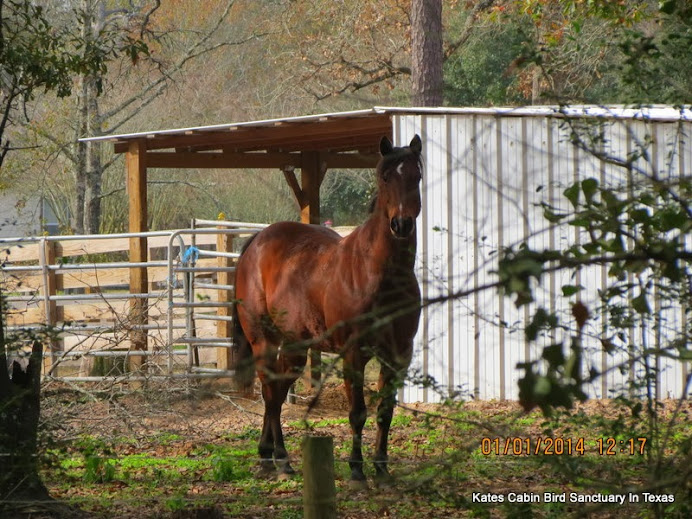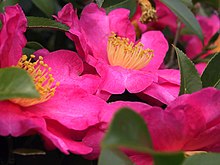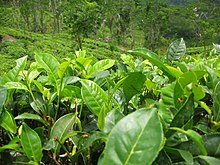

Hi Everybody!!
Winter celebration in progress as I see the little hummingbird on New Years Day! His nectar turned into a sugar icee when it froze, so I replaced it with warm nectar. This is the first hummingbird that has stayed to winter here (that I have witnessed) ever. I get a thrill out of seeing him each new day he makes it in the cold. Tomorrow will be the coldest yet as it dips to the low 20s for 2 nights. Below I have shared some pics from around the grounds on New Year's Day along with the links to the photostudy in the G+Albums. Has everyone made the adjustment to the New Year? It is not the change of the year I notice as much as the change in every day, every moment. It is great to be alive and I share that joy with all of You! Love and Blessings in the New Year. Enjoy!
Fat Sissy is here to Roll in the New Year!


link to photostudy in album:
https://plus.google.com/u/0/photos/117645114459863049265/albums/5964466477826389409
Fat Sissy sees something on the other side of the creek

It is the horse: Big Red

Sissy has a better look under the bridge

It is a horse, of course!

One of the first blooms of winter-Paperwhites

https://en.wikipedia.org/wiki/Narcissus_papyraceus
Narcissus papyraceus
From Wikipedia, the free encyclopedia
Narcissus papyraceus (from papyrus and aceus; meaning paper-like[1]), one of a few species known as "Paperwhite," is a perennial bulbous plant native to the Mediterraneanregion. The white flowers are borne in bunches and are strongly fragrant. It is frequently grown as a house plant, often forced to flower at Christmas.
Paperwhites are part of the Narcissus genus which includes plants known as daffodils.
| Paperwhite (Narcissus papyraceus) | |
|---|---|
 | |
| Paperwhite, Narcissus papyraceus | |
| Scientific classification | |
| Kingdom: | Plantae |
| Clade: | Angiosperms |
| Clade: | Monocots |
| Order: | Asparagales |
| Family: | Amaryllidaceae |
| Subfamily: | Amaryllidoideae |
| Genus: | Narcissus |
| Species: | N. papyraceus |
Description[edit]
The stems are mid-green and grow upright. Mature height is usually 1–1.5 ft (30–45 cm), though this varies by variety. Several white flowers are borne at the top of each stem and are strongly scented.
Cultivation[edit]
Many cultivars are available and are easy to force into bloom indoors. Unlike otherNarcissus species, Paperwhites do not require chilling to promote bloom. The bulbs begin to grow as soon as they are planted, with flowers appearing in 3–4 weeks.
Narcissus papyraceus thrives in moist, peat moss based potting mix. Plants can also be grown in containers of water. Cool temperatures between 50–65 °F (10–18 °C) and indirect light will help to prolong the bloom time.
Camillia bud about to open

https://en.wikipedia.org/wiki/Camellia
Camellia
From Wikipedia, the free encyclopedia
Camellia is a genus of flowering plants in the family Theaceae. They are found in eastern and southern Asia, from the Himalayas east to Japan and Indonesia. There are 100–250 described species, with some controversy over the exact number. The genus was named by Linnaeus after the Jesuit botanist Georg Joseph Kamel, who worked in the Philippines, though he never described a camellia. This genus is famous throughout East Asia; camellias are known as cháhuā (茶花) in Chinese, "tea flower", an apt designation, astsubaki (椿) in Japanese, as dongbaek-kkot (동백꽃) in Korean and as hoa trà or hoa chèin Vietnamese.
Of economic importance in the Indian subcontinent and Asia, leaves of C. sinensis are processed to create the popular beverage, tea. The ornamental Camellia japonica, Camellia oleifera and Camellia sasanqua and their hybrids are represented in cultivation by a large number of cultivars.
| Camellia | |
|---|---|
 | |
| Christmas Camellia (Camellia sasanqua) is a popular plant with many uses | |
| Scientific classification | |
| Kingdom: | Plantae |
| (unranked): | Angiosperms |
| (unranked): | Eudicots |
| (unranked): | Asterids |
| Order: | Ericales |
| Family: | Theaceae |
| Genus: | Camellia L. |
Description[edit]
Camellias are evergreen shrubs or small treesup to 20 m (66 ft) tall. Their leaves are alternately arranged, simple, thick, serrated, and usually glossy. Their flowers are usually large and conspicuous, one to 12 cm in diameter, with five to nine petals in naturally occurring species of camellias. The colors of the flowers vary from white through pink colors to red; truly yellow flowers are found only in South China and Vietnam. Camellia flowers throughout the genus are characterized by a dense bouquet of conspicuous yellow stamens, often contrasting with the petal colors.[1][2]The so-called "fruit" of camellia plants is a dry capsule, sometimes subdivided in up to five compartments, each compartment containing up to eight seeds.
The various species of camellia plants are generally well-adapted to acidic soils rich inhumus, and most species do not grow well on chalky soil or other calcium-rich soils. Most species of camellias also require a large amount of water, either from natural rainfall or from irrigation, and the plants will not toleratedroughts. However, some of the more unusual camellias – typically species from karst soils in Vietnam – can grow without too much water.
Camellia plants usually have a rapid growth rate. Typically they will grow about 30 cm per year until mature – though this does vary depending on their variety and geographical location.
Camellia plants are used as food plants by the larvae of a number of Lepidoptera species; see List of Lepidoptera that feed on Camellia. Leaves of the Japanese Camellia (C. japonica) are susceptible to the fungal parasite Mycelia sterile (see below for the significance).
Use by humans[edit]
Camellia sinensis, the tea plant, is of major commercial importance because tea is made from its leaves. While the finest teas[citation needed] are produced by C. sinensis thanks to millennia of selective breeding of this species, many other camellias can be used to produce a similar beverage. For example, in some parts of Japan, tea made from C. sasanqua leaves is popular.
Tea oil is a sweet seasoning and cooking oil made by pressing the seeds of C. oleifera, C. japonica, and to a lesser extent other species such as C. crapnelliana, C. reticulata, C. sasanqua and C. sinensis. Relatively little-known outside East Asia, it is the most important cooking oil for hundreds of millions of people, particularly in southern China.
Camellia oil is commonly used to clean and protect the blades of cutting instruments.
Camellia oil pressed from seeds of C. japonica, also called tsubaki oil or tsubaki-abura (椿油) in Japanese, has been traditionally used in Japan for hair care.[3]
Garden history[edit]
Camellias were cultivated in the gardens of China and Japan for centuries before they were seen in Europe. The German botanistEngelbert Kaempfer reported[5] that the "Japan Rose", as he called it grew wild in woodland and hedgerow, but that many superior varieties had been selected for gardens. He was told that the plant had 900 names in Japanese. Europeans' earliest views of camellias must have been their representations in Chinese painted wallpapers, where they were often represented growing in porcelain pots.
The first living camellias seen in England were a single red and a single white, grown and flowered in his garden at Thorndon Hall, Essex, by Robert James, Lord Petre, among the keenest gardeners of his generation, in 1739. His gardener James Gordon was the first to introduce camellias to commerce, from the nurseries he established after Lord Petre's untimely death in 1743, at Mile End, Essex, near London.[6]
With the expansion of the tea trade in the later 18th century, new varieties began to be seen in England, imported through the British East India Company. The Company's John Slater was responsible for the first of the new camellias, double ones, in white and a striped red, imported in 1792. Further camellias imported in the East Indiamen were associated with the patrons whose gardeners grew them: a double red for Sir Robert Preston in 1794 and the pale pink named "Lady Hume's Blush" for Amelia, the lady of Sir Abraham Hume of Wormleybury, Hertfordshire (1806). The camellia was imported from England to America in 1797 when Colonel John Stevens brought the flower as part of an effort to grow attractions within Elysian Fields in Hoboken, New Jersey.[7] By 1819, twenty-five camellias had bloomed in England; that year the first monograph appeared, Samuel Curtis's, A Monograph on the Genus Camellia, whose five handsome folio colored illustrations have usually been removed from the slender text and framed. Camellias that set seed, though they did not flower for more than a decade, rewarded their growers with a wealth of new varieties. By the 1840s, the camellia was at the height of its fashion as the luxury flower. The Parisian courtesan Marie Duplessis, who died young in 1847 inspired Dumas' La Dame aux camélias and Verdi's La Traviata.
The fashionable imbricated formality of prized camellias was an element in their decline, replaced by the new hothouse orchid. Their revival after World War I as woodland shrubs for mild climates has been paralleled by the rise in popularity of Camellia sasanqua.
Buzzing the sky


...this is brendasue signing off from Rainbow Creek. See You next time.

O+O



No comments:
Post a Comment
Hi Everybody! Please say hello and follow so I know you are here! Due to the inconsideration of people trying to put commercials on my blog comment area, I have restricted use of anonymous posts. Sorry that some hurt all.
My public email is katescabin@gmail.com No spammers or trolls